Using substantial ground arrays and underground muon detectors, the Tibet ASγ Collaboration has captured evidence of ultra-high-energy gamma rays that are thought to be the result of nuclear interactions between cosmic rays and interstellar gas. Plus, OSIRIS-REx, Ingenuity, InSight, comet 2I/Borisov, and things getting hit (or not) by other things.
Media
Transcript
Hello and welcome to the Daily Space. I am your host Dr. Pamela Gay.
And I am your host Beth Johnson.
And we are here to put science in your brain.
Or at least plans for spacecraft to do science.

Tomorrow, the OSIRIS-REx mission is going to do a final close flyby of the asteroid Bennu. Back on October 20, the mission collected a sample of the asteroid and discovered while trying to bounce off its surface, that its surface isn’t exactly solid. The mission accidentally plunged half a meter into the asteroid before its thrusters could reverse its motion.
On April 7, during an almost six-hour imaging sequence, OSIRIS-REx will obtain high-resolution images similar to the initial mapping images it obtained in 2019. I, for one, am looking forward to seeing if OSIRIS-REx left a crater on Bennu, or if the rocks simply flowed like ball pit balls and filled in the hole the mission made. Hopeful initial images will be released later this week.
This is OSIRIS-REx’s final hi-res imaging run, and on May 10 the mission will begin its journey home. In September 2023, we can expect its samples to get returned to Earth.
While OSIRIS-REx does its thing at Bennu, over on Mars, the Perseverance Rover has deposited its companion helicopter, Ingenuity, onto the Martian surface, and teams are now carefully running checks and making sure Ingenuity can get a good solar charge before it attempts its first flight no earlier than April 11. The current plan is to just try and fly over a 10m x 10m region that is flat and boulder-free. Hopefully next week we’ll have images to share.
From space hardware, we now turn our attention to space objects with an update on the interstellar comet 2I/Borisov. Back in the before times, in fall 2019, amateur astronomer Gennady Borisov discovered a comet passing through our solar system on a trajectory that indicated it is a visitor from some other star system. Since then, astronomers have used every possible telescope to observe Borisov in as much detail as possible.
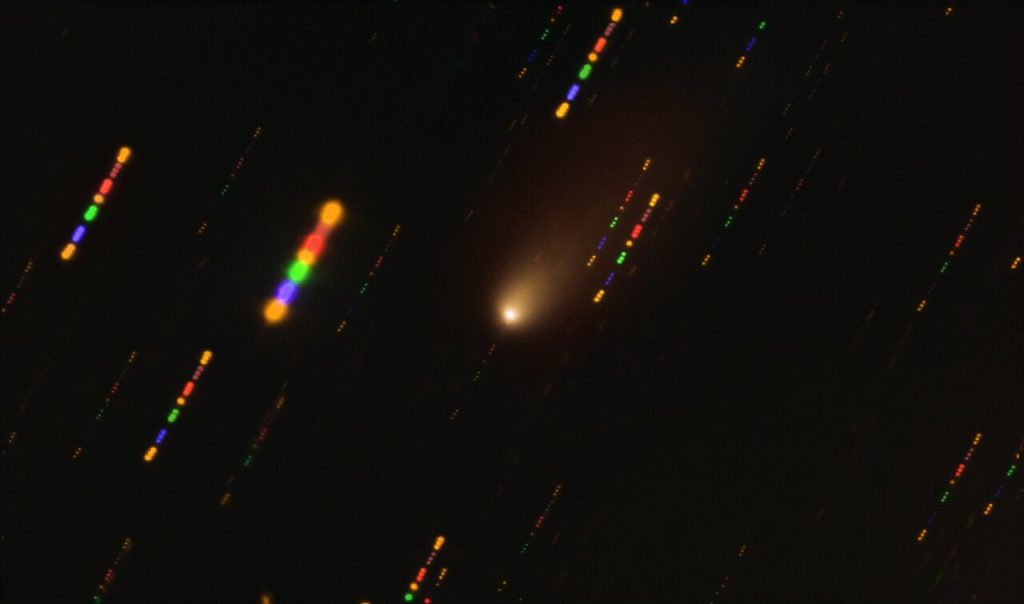
According to Ludmilla Kolokolova: The arrival of 2I/Borisov from interstellar space represented the first opportunity to study the composition of a comet from another planetary system and check if the material that comes from this comet is somehow different from our native variety.
One of the involved telescopes, the giant Very Large Telescope in Chile, has revealed that Borisov appears to have received minimal weathering from solar wind and radiation and preserves the composition it was formed with. According to study lead author Stefano Bagnulo: 2I/Borisov could represent the first truly pristine comet ever observed.
This work appears in Nature Communications. Coauthor Alberto Cellino adds: The environment in which 2I/Borisov originated is not so different in composition from the environment in the early Solar System.
Currently, Comet Borisov is racing out of our solar system and is beyond the ability of a spacecraft to readily run down and sample or observe. In anticipation of future discoveries of alien comets, the European Space Agency is planning to launch Comet Interceptor in 2029, which will have the capability of reaching another visiting interstellar object, if one on a suitable trajectory is discovered.

This comet and its similarity to objects in our solar system is a reminder that science really does work the same everywhere, and we can see familiar sights in some of the least familiar places. In a new paper in JGR: Space Physics, led by Vincent Hue, researchers describe a new aurora discovered glowing in Jupiter’s high latitudes. Hue explains: We think these newly discovered faint ultraviolet features originate millions of miles away from Jupiter, near the Jovian magnetosphere’s boundary with the solar wind. The solar wind is a supersonic stream of charged particles emitted by the Sun. When they reach Jupiter, they interact with its magnetosphere in a way that is still not well understood.
Jupiter’s powerful magnetic field is driven by its speedy ten-hour rotation. This field prevents solar particles from directly triggering aurorae, as happens here, but particles may somehow be channeled through the field to these observed ring aurorae. It’s still not well understood; this is something new and beautiful discovered by the Juno mission, and more data and modeling are still needed.
One of the problems with the electromagnetic spectrum is at a certain point we just kind of stopped naming things. Photons, the particles that make up light, come in a lot of different energies that our eyes perceive as color, our skin perceives as heat, and our radios convert into music. Those photons we see with our eyes get grouped by color in the visible spectrum: r-o-y-g-b-i-v. Sunburns do a good job highlighting the UVA and UVB parts of the spectrum. Beyond that, medicine highlights the use of X-rays, and catastrophic nuclear events teach us about gamma rays. And really, anything higher energy than X-rays, we call those gamma rays, and there are a whole lot of energies beyond X-rays that we are all lumping together.
Gamma-ray light comes from a lot of different sources, none of which are beakers in labs that can produce Spider-Man. One of the most common sources is particles getting accelerated to high velocities and then hitting something. That sudden stop converts kinetic energy into myriad things, including high-energy gamma rays.
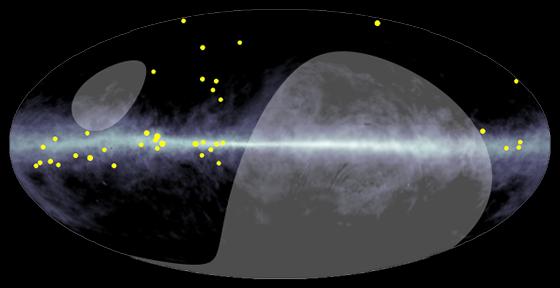
In astronomy, rogue high-energy particles are called cosmic rays. This name can get a bit confusing, because high-energy, like gamma ray, doesn’t really have a clear definition. If your home is built on granite bedrock, you may have radon in your basement and cosmic rays creating bright spots on camera images. This is because radium-226 in granite and other rocks can decay, releasing zippy little protons and helium nuclei in the process that are essentially cosmic rays from our own planet.
These aren’t particularly high energy; they don’t generally cause gamma rays to form, but they are still called cosmic rays. So now you know that there are many reasons why astronomers shouldn’t name things — lack of clarity, or over clarity, generally being problems.
On the other extreme, some supernovae, jets from stellar mass black holes and neutron star accretion disks, and other situations with massive magnetic fields accelerate protons to noticeable fractions of the speed of light, and when those particles hit things, they can generate gamma-ray photons.
And we now know, thanks to a new paper in Physical Review Letters, that if you move from the powerful magnetic fields associated with stars to the more powerful magnetic fields associated with the supermassive black holes in the centers of galaxies, you can produce even higher energy protons, and when those protons hit random gas molecules in our galaxy, they produce gamma rays with such high energy that researchers made up a new word: PeVatrons.
Essentially, cosmic rays from the Milky Way’s core produce gamma rays with energies measured in petaelectron volts. While some of these cosmic rays are inevitably hitting our world now and then, that’s not how these were detected. Instead, researchers from the Tibet ASγ Collaboration detected PeVatrons from the gas along the Milky Way. Cosmic rays originate in the core, fly across the galaxy to hit gas along the galaxy’s arms, and those collisions produce PeVatron energy gamma rays that then travel across the galaxy until they hit our atmosphere and trigger a detector on the Tibetan plateau. There really is no limit to just how much energy one particle can have; we just stop naming them after a while, at least until they are found.
PeVatrons – we welcome you to the Gamma Ray part of the EM Spectrum.
Let’s come back to our own solar system and talk about another mission to the red planet, NASA’s InSight. We’ve been calling it that for so long now that even I have forgotten it’s an acronym — Interior Exploration using Seismic Investigations, Geodesy and Heat Transport. This mission is designed to search for answers about the interior structure of Mars and the planet’s formation/evolution, plus gather data on tectonic activity and meteorite impacts.
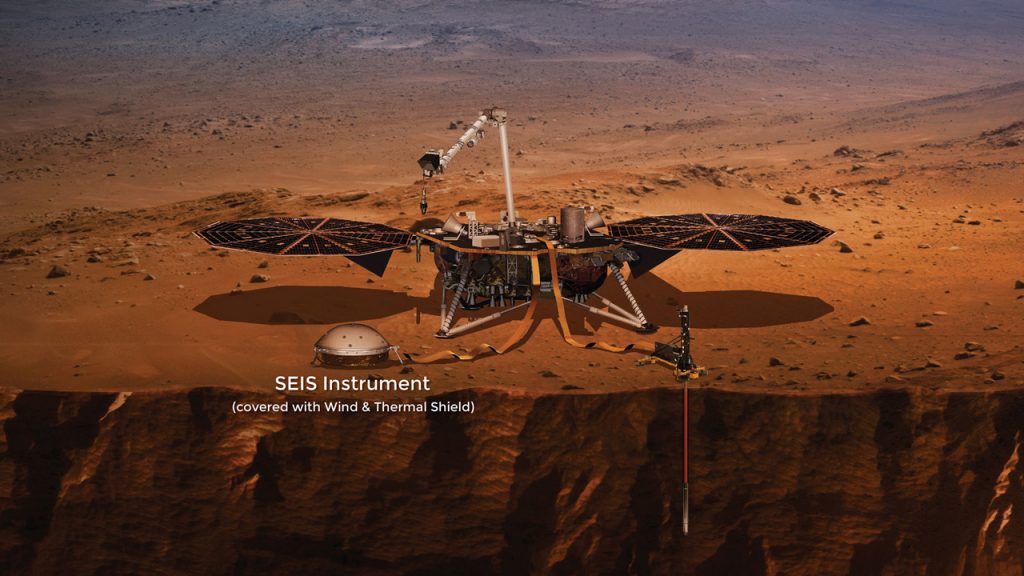
InSight was launched in May 2018 from Vandenberg Air Force Base here in California. It took six months to get to Mars and landed on November 26. Upon landing, InSight had to unfurl all its solar panels, which are two fan-like discs on either side of the lander. Then all the other instruments had to be checked out and tested, pictures of the landing site were taken, and it took about ten weeks before the real science began.
One of those instruments is a seismometer named SEIS, for Seismic Experiment for Interior Structure because everything needs an acronym. Atop the instrument is a protective dome to spare the instrument the effects of wind and temperature. In the first year alone, SEIS detected more than 450 seismic signals, most of which were marsquakes. The largest of those was about a 4.0 in magnitude; interesting in and of itself, but not big enough to travel below the crust and into the mantle and core to give us any information about Mars’ interior.
We know that Mars doesn’t have tectonic plates like Earth, but it does have volcanically active regions, and those regions can cause marsquakes. During that first year of operations, InSight detected two quakes in the Cerberus Fossae region that measured 3.6 and 3.5. And just this past week, NASA announced that InSight detected two more strong quakes in the same region, measuring 3.3 and 3.1 magnitude. They’re still not big quakes, but they are very clear signals that lead scientists to believe that this region is a center for seismic activity on Mars.
What makes these four quakes so interesting is that they are Earth-like quakes. Researchers have divided the marsquakes into two distinct types based on their physical properties, such as the course of travel. Earth-like quakes travel directly through the planet, while Moon-like quakes tend to be more scattered. Honestly, most marsquakes have tended to be a bit in between the two types, but these four are definitely Earth-like.
Another fascinating piece of these most recent detections is that they were, like the previous two quakes, recorded during the Martian northern summer. Winter on Mars is windy…ish. The dome on the seismometer does cut down on the wind, but that wind is noisy enough that the vibrations caused by it obscure any marsquake detections. Over this past Martian northern winter, no quakes were detected at all. Once the winds quieted down, we heard these two new quakes.
We mentioned that the dome also protects the seismometer from Martian temperatures, which can fluctuate from -100 degrees Celsius to 0 degrees Celsius. While the instrument is protected, those extreme variations lead to popping sounds and even spikes in the data. So the mission team is trying to insulate the cable from the weather by using InSight’s robotic arm to drop Martian soil on top of the dome. The soil then trickles down to cover the cable and provide some more insulation but doesn’t interfere with the shield’s seal with the ground.
This mission is kind of amazing because they keep having to problem solve from a distance. First, there was the mole that was trying to dig underground but the dirt wasn’t a good consistency. They tried everything they could before they finally stopped that portion of the mission. Now they’re trying to improve an instrument on another planet using only the lander and the surrounding dirt. And they’re about to combat another force of nature — lack of sunlight. The solar panels, like those of Spirit and Opportunity before, are covered in dust, and Mars is moving away from the Sun. It’s expected that InSight will hibernate until after July, but the SEIS team is hoping to keep their instrument on for another month or two.
As always, we’ll bring you updates on the analysis of these quakes and the status of InSight this summer as they are published.
Okay. Time to talk about space rocks and how they sometimes attack.
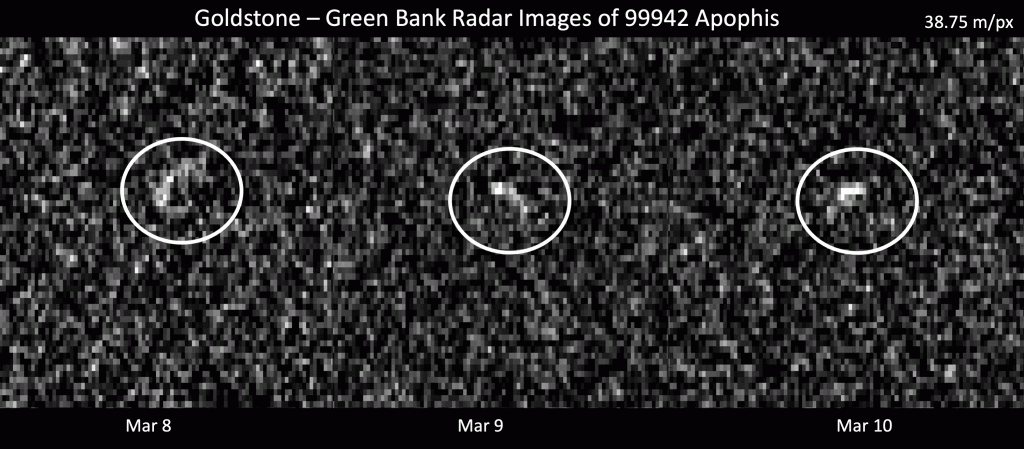
Several years ago, there was a whole lot of excitement that Earth might get hit by the asteroid Apophis if its orbit turned out to be just so. Well, March 8-10, its orbit and Earth’s came together, but at a healthy distance, and new measurements determined that it will not hit us in 2029, 2036, or even in 2068. Beyond that, there is still a risk. This 350-meter across asteroid is just big enough to do a lot of damage if it collides, and its Earth-crossing orbit crosses a bit too close to Earth for comfort.
Earth-crossing just means the orbits intersect; it doesn’t mean the objects intersect. In a best-case scenario, an asteroid crosses Earth’s orbit when the Earth is far away, like the other side of the Sun far away. Apophis, however, likes to get close and will endanger satellites as it flies beneath all the geostationary weather and comms satellites in 2029. With this new data, Apophis has been removed from the potentially hazardous to humans list, and I wait eagerly to see if we are able to get any cool images of it from weather satellites in 2029.

We aren’t always this lucky with asteroids. We suspect our own moon was formed when a Mars-sized object hit the proto-Earth and generated a splash of lighter weight material that formed the Moon while the heavier bits of both objects stayed together to make up our Earth. In a new paper in Science, scientists used seismographic maps of the Earth’s innards — maps like InSight is trying to make of Mars — to identify two continent-sized layers of rock buried deep inside the Earth’s mantle. These structures are unusual, and according to the article summary: [they] simply have crystallized out of the depths of Earth’s primordial magma ocean. Or they might be dense puddles of primitive mantle rock that survived the trauma of the Moon-forming impact. But based on new isotopic evidence and modeling, [lead author] Qian Yuan believes the [structures] are the guts of the alien impactor itself.
We aren’t in a position to go digging, but it is cool to think there may be shrapnel still intact in our world.
Since that fateful impact, rocks have continued to fall out of the sky in a variety of sizes. And sometimes, they explode in the atmosphere instead of hitting. This happened over Tunguska Siberia in 1908, over Chelyabinsk Russia in 2013, and has probably happened many other times over places that had fewer humans to notice. One of those times appears to have been about 430,000 years ago over modern-day Antarctica.
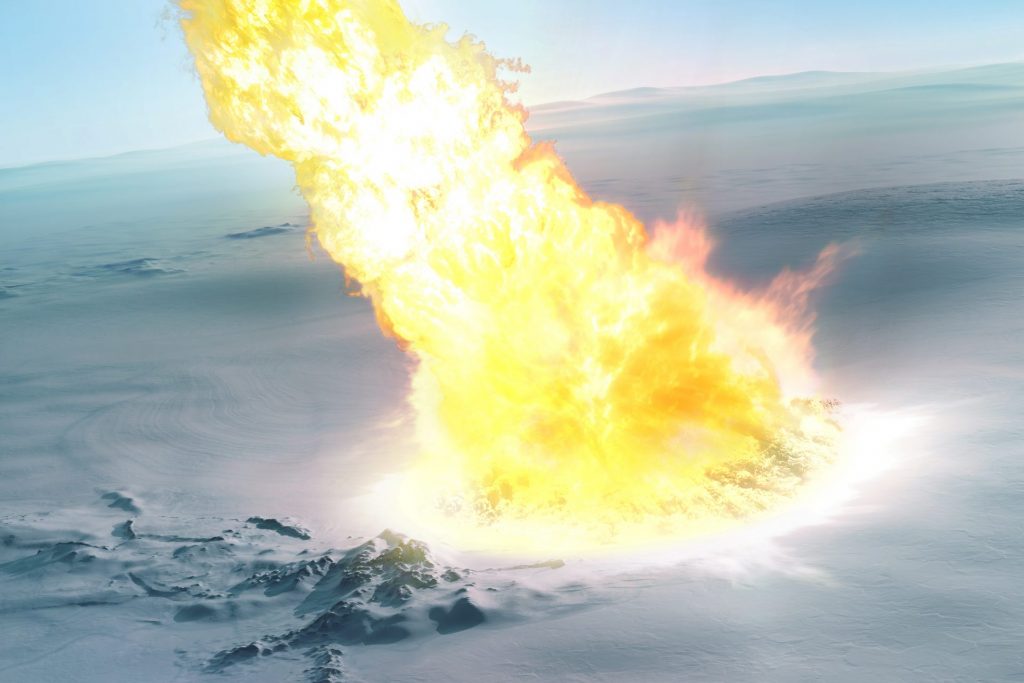
Researchers exploring the summit of Walnumfjellet within the Sør Rondane Mountains in East Antarctica found myriad small weird nodules that appear to have come from an object bigger than your typical airburst but that didn’t crater the planet. This research is published in Science Advances with lead author Mattias van Ginneken and shows that medium-sized asteroids can be dangerous in a new way: they can literally explode like a massive cloud of tiny rocks in what are being called touchdown events. According to van Ginneken: While touchdown events may not threaten human activity if occurring over Antarctica, if it was to take place above a densely populated area, it would result in millions of casualties and severe damages over distances of up to hundreds of kilometers.
This is a reminder, space will try and kill us, and we’re still discovering all its weapons.
This has been the Daily Space.
Learn More
OSIRIS-REx Makes Final Observation Run of Bennu
- NASA press release
Ingenuity Helicopter Touches Down on Martian Surface and Prepares to Fly
- NASA JPL press release
Interstellar Comet 2I/Borisov May Be Most Pristine Comet Found
- ESO press release
- “Unusual polarimetric properties for interstellar comet 2I/Borisov,” S. Bagnulo et al., 2021 March 30, Nature Communications
New Auroral Feature Discovered on Jupiter by Juno Mission
- SwRI press release
- “Detection and Characterization of Circular Expanding UV‐Emissions Observed in Jupiter’s Polar Auroral Regions,” V. Hue et al., 2021 March 9, JGR Space Physics
Welcome to the Gamma Ray Party, PeVatrons!
- Chinese Academy of Sciences press release
- APS press release (EurekAlert)
- “First Detection of sub-PeV Diffuse Gamma Rays from the Galactic Disk: Evidence for Ubiquitous Galactic Cosmic Rays beyond PeV Energies,” M. Amenomori et al., 2021 April 5, Physical Review Letters
NASA’s InSight Detects More Marsquakes
- NASA JPL press release
Remains of Theia, Earth’s Moon-Forming Impactor, May Still Exist Deep in Earth
- Science article
- Giant Impact Origin for the Large Low Shear Velocity Provinces (LPSC Abstract)
Asteroid Apophis No Longer Threat to Earth in Next Century
- ESA press release
Evidence Found for Ancient Meteorite Impact Over Antarctica
- University of Kent press release
- “A large meteoritic event over Antarctica ca. 430 ka ago inferred from chondritic spherules from the Sør Rondane Mountains,” M. Van Ginneken et al., 2021 March 31, Science Advances
Credits
Written by Pamela Gay and Beth Johnson
Hosted by Pamela Gay and Beth Johnson
Audio and Video Editing by Ally Pelphrey
Content Editing by Beth Johnson
Intro and Outro music by Kevin MacLeod, https://incompetech.com/music/


 We record most shows live, on Twitch. Follow us today to get alerts when we go live.
We record most shows live, on Twitch. Follow us today to get alerts when we go live.